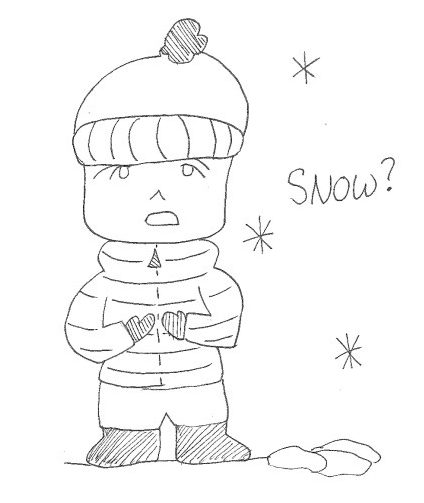Baby It’s Cold Outside, But the Earth Is Burning Up
December 19, 2017
“This is going to be my first snow!” CRLS freshman Aritra Roy Mazumder is excited to see a snow day for the first time in his life. He spent most of his childhood in Bangladesh and can’t wait to spend his first snow day “sitting on [his] ass next to the heater.”
If this winter is anything like Juno, the record-breaking six-week-long blizzard of January 2015, Mazumder can plan on spending most of January at home keeping warm. However, unusual storms such as Juno have many people worried about the effects of climate change. Even with the extreme conditions we’ve experienced in the past few years, what this means for the future is still uncertain.
The question is: What will Cambridge winters end up looking like? Well, it’s complicated. Despite common misconception, climate change does not just mean hot weather—it means extremes. Exceptionally warm or cold temperatures are evidence that our planet’s atmosphere is changing.
Climate change is directly connected to the moisture that comes from our warming climate. Carbon dioxide released into the atmosphere acts as a heat-trapping blanket over the Earth. This warm environment increases levels of moisture in the air, which condense into clouds. In the colder New England atmosphere, the condensation usually takes the form of snowflakes in the winter. When the temperature is on the warmer side of freezing—like 31 degrees Fahrenheit—those snowflakes are wet, heavy, and pile up fast, which makes shoveling the sidewalk a much more grueling task.
The concepts of La Niña and El Niño are often mentioned when discussing climate change. “It all has to do with the heating of the Pacific Ocean, and the air over the Pacific Ocean, and the movement of that air across to Asia,” says Ms. Stomberg, a biology teacher here at CRLS who is familiar with weather patterns such as La Niña and El Niño.
La Niña refers to unusually cold temperatures of the Equatorial Pacific, and El Niño is the opposite, referring to uncharacteristically warm ocean temperatures at the equator. La Niña results in warmer temperatures in southeastern U.S. and colder temperatures in the Northwest. El Niño, logically, has the opposite effect. Essentially, El Niño and La Niña alter the patterns of warm and cool temperatures, as well as wet and dry climates.
So, what does this mean for us? La Niña was strong in January 2015. We experienced a record-breaking blizzard—it was the snowiest January in history for the greater Boston area. That winter, we got 110.6 inches of snow. Cambridge had six school days canceled due to snow during the season.
But the real question that students are wondering is: Are we going to have any snow days this year? It’s uncertain, but there are some clues. Meteorologists say that this year’s La Niña is looking weak, which suggests a warmer winter season. The Old Farmer’s Almanac, whose forecasts are largely based off of solar activity instead of La Niña/El Niño patterns, also predicts warmer-than-average temperatures for central and northeastern U.S.—though they say it will be cooler than last winter overall.
Still, the National Oceanic and Atmospheric Administration (NOAA) says this does not rule out the possibility of a few flakes. However, this is similar to the predictions prior to Juno in 2015—that winter began with a warmer-than-usual November and December period as well. “Snow, in general, is unpredictable a little bit,” Ms. Stomberg notices, “but now these trends are not trends: We are just kind of all over the place.”
Snow days can be nice time off, but, as we all know, we pay for them at the end of the year. Predictably, seniors are hoping for many days off, knowing that they won’t have to extend school into their summer. “At least one of these snow days will be seemingly unnecessary,” says freshman Ari Yannakis-Carroll, noting that sometimes school is canceled due to forecasts that turn out to be wrong. “Not that I’m complaining,” she adds, “sometimes it’s nice to just not have to go to school and sleep in.”
Snow storms are not the only proof we have of climate change. This November, for example, we had sporadic temperatures, alternating between very cold and very warm days. This past summer, we had a couple days in the fifties, which is well below the average. Many have had to go digging for the summer clothes they had put into storage for the winter and the next day been bundled up in their puffiest winter coat.
As of mid-December, it’s hard to tell just how we will be affected by La Niña because there is no single tell-tale symptom of climate change.
Still, the extreme weather we have been seeing is not unrelated. But, as the saying goes: If you don’t like the weather in New England, just wait a few minutes!
This piece also appears in our December print edition.










